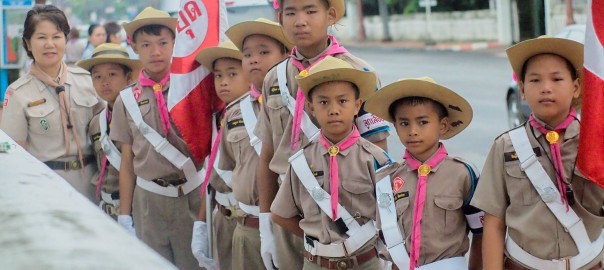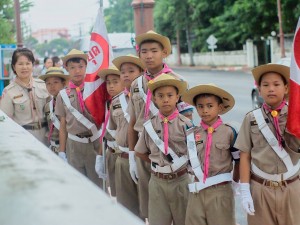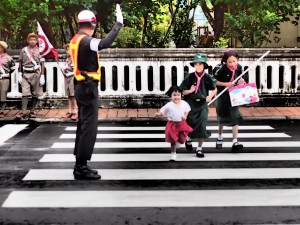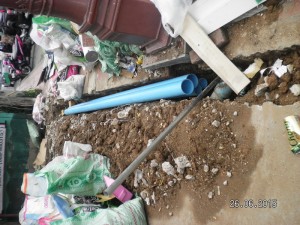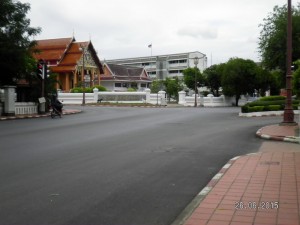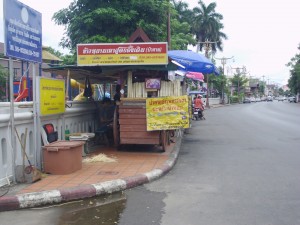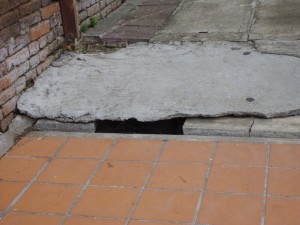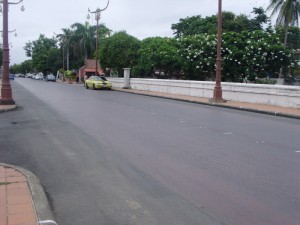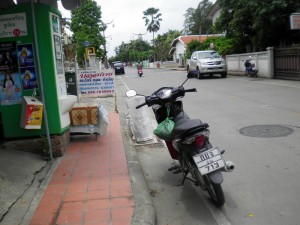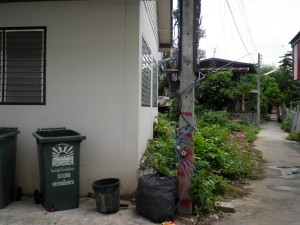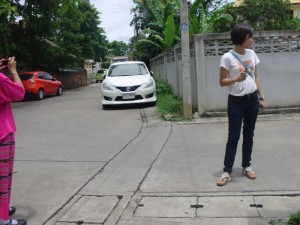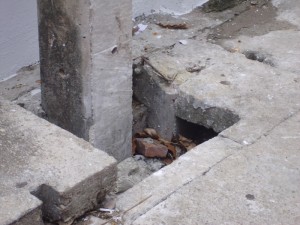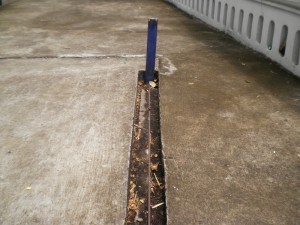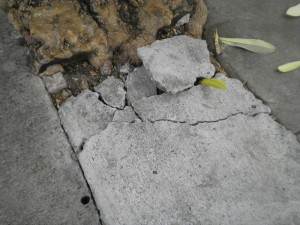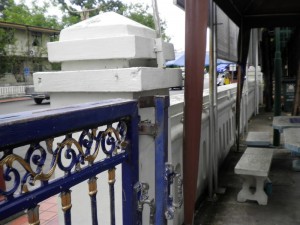Safe School Zones Project (2-year project)
The School Zone project was initiated by Safe Kids Worldwide due to many children frequently exposed to vehicles and the risks vehicles pose to children around schools. This initiative, therefore, focus on pedestrian safety in the area surrounding elementary schools, which will be known as the school zone. The National Center for Safe Routes to School describes the ideal school zone as one that “starts at the front door and encompasses the campus and as many blocks as possible that surround the school and have a high concentration of school-generated traffic”.
A properly designed school zone with traffic calming measures will “remind motorists to treat the area with special care and attention. The purpose of the project is to improve the safety of pedestrians around schools by evaluating the school zone and implementing different interventions, with a focus on permanent environmental and infrastructure improvements. In addition to pedestrian safety evaluations carried out by volunteers or road safety professionals, students will also participate in the evaluation using PHOTOVOICE methodology. This pilot study will serve as an example to other schools, governments and organizations working to improve safety by demonstrating the importance of identifying environmental and behavioral risks, the effectiveness of the interventions, and the value of data aggregation and analysis. The ultimate goal is to demonstrate that this Model School Zone project can be effective and adapted to benefit children in countries of varying resource-levels, despite the diversity of risks and issues surrounding school zones.
Safe School Zones Project: School Selection
In collaboration with Nan Municipality, Nan Hospital, the Primary Educational Service Area Office in Nan Province, Chairman of the Engineering Institute of Thailand safety engineering subcommittee, Safe Kids Thailand organized the Safe School Zones Project at Jumpeewanidaporn School, Nan Province. The school was selected because it was high risk, with high rates of child pedestrians, and schools with a principal showing a strong commitment to traffic and pedestrian safety and willingness to support the project. Prior to implementation, the Working Committee was established with 10 relevant stakeholders including the school, engineers, police, the government, hospitals, municipality, and parents.
Safe School Zones Project: PHOTOVOICE Training
June 26, 2015 — Safe Kids Thailand conducted the PHOTOVOICE Training to 12 students, grade 4-6 of Jumpeewanidaporn School to evaluate children’s pedestrian safety, it was carried out by volunteers, road safety professionals, and the students using PHOTOVOICE methodology.
PHOTOVOICE is a medium that can be used to reflect the community back upon itself and reveal the everyday social realities that influence people’s lives. As a methodology employed here, PHOTOVOICE can spark policy and social change by engaging, reaching, informing, and organizing community members. Children, parents, teachers, and community members are invited to identify pedestrian-related issues in their community and explore possible solutions. To provide opportunity for children to participate, children will use photography to capture the reality of pedestrian environments on the way from/to school and illustrate the risks they face daily as pedestrians. All the photos will be displayed to the public and relevant agencies in order to spark the policy and social change in every related agency toward children’s pedestrian safety. Activities include;
Session 1: Pedestrian Safety Education
Session 2: Photography Training
Students learned how to take pictures, understood the ethics in photographing, able to operate a camera, understood its basic functions, the purpose of photographing, and the importance of being safe while participating in the project.
Session 3-4: Observational Research Field Trip in the Community
- Divided into 4 groups with a chaperone per a group
- Determined environment condition and the location for photographing. Selected environment for photographing should be “the risk areas for pedestrians within and surrounding the school”. Members of each group and the observed location
Session 5-6: Discussion and Photo selection
- Students selected a photo that most accurately reflect their pedestrian safety concerns and want to have the environment modified. Provide information in “My PHOTO”. Then, presented and described their photo as following records:
*******************************************************
Photo 1
taken by: Miss Prapatsorn Muenjina (Pam) -10 years, Primary 4/1 Jumpeewanidaporn School
Photo title
“Watch out..DANGER!!!”
Location
At the front of school
Why do you think it is dangerous?
“Uneven surface of road with many scraps and rubbish above. This may cause the children trip or have injury.”
What should be done to improve the environment?
“Clear the area, remove all scraps and rubbish.”
Who is responsible to improve the environment?
“All relevant agencies”
Other comments -No-
************************************
Photo 2
taken by: Mstr. Chanachai Tamai (Kla) -11 years, Primary 6/1 Jumpeewanidaporn School
Photo Title
“Dangerous crossing”
Location
“At the museum, in front of school.”
Why do you think it is dangerous?
“Because there is no zebra crossing; students may get road accident.”
What should be done to improve the environment?
“Need zebra crosing, warning sign, light and traffic light.”
Who is responsible to improve the environment?
“Municipal officials, Police officers”
Other comments -No-
************************************
Photo 3
taken by: Mstr. Kittipon Yakab (Arm) -12 years, Primary 6/2 Jumpeewanidaporn School
Photo Title
“Dangerous shop location”
Location
At the front of school
Why do you think it is dangerous?
“Cars may hit the children”
What should be done to improve the environment?
“Extend the pavement to prevent any accidents’”
Who is responsible to improve the environment?
“Municipal officials”
Other comments -No-
************************************
Photo 4
taken by: Miss Thippayaporn Aimprasert (Fern) -10 years, Primary 5/2 Jumpeewanidaporn School
Photo Title
“Risky way”
Location
Way from temple to school
Why do you think it is dangerous?
“Children may be tripped”
What should be done to improve the environment?
“To slope the step down to prevent tripping or falling”
Who is responsible to improve the environment?
“Teachers”
Other comments -No-
************************************
Photo 5
taken by: Miss Siriprapa Anu (Muew) -12 years, Primary 6/2 Jumpeewanidaporn School
Photo Title
“Danger to tourists”
Location
Wat Pumin’s main entrance
Why do you think it is dangerous?
“There is no zebra crossing. This may cause the tourists hit by cars.”
What should be done to improve the environment?
“To have zebra crossing for tourists’ safety”
Who is responsible to improve the environment?
“The Mayor of Nan”
Other comments -No-
************************************
Photo 6
taken by: Mstr. Pongsathorn Somaksorn (Ice) -12 years, Primary 6/2 Jumpeewanidaporn School
Photo Title
“Obstructed Pavement”
Location
The pavement opposite the jail
Why do you think it is dangerous?
“Narrow pavement caused by things for selling of shop owners. Children need to walk on road and may have injury.”
What should be done to improve the environment?
“Remove things from pavement”
Who is responsible to improve the environment?
“Shop owner or landlord”
Other comments -No-
************************************
Photo 7
taken by: Miss Natthida Kweawsombat (Milk) -12 years, Primary 6 Jumpeewanidaporn School
Photo Title
“Dangerous electrical pole”
Location
The alley near Wat Mingmueang
Why do you think it is dangerous?
“Electricity leakage may happen. If raining, it leads the people walking along this way to the death or injury by electrocution.”
What should be done to improve the environment?
“Keep the electrical cables organized or tidy”
Who is responsible to improve the environment?
“Community leaders, municipal officials, electricity officials.”
Other comments -No-
************************************
Photo 8
taken by: Mstr. Nanthayos Rungthong (Night) -12 years, Primary 6 Jumpeewanidaporn School
Photo Title
“Dangerous curve”
Location
At the back of Jumpeewanidaporn School
Why do you think it is dangerous?
“Car parking at the corner leads the other cars unable to see the road clearly and may cause car accident.”
What should be done to improve the environment?
“Car parking at the corner of road is not allowed. ‘No parking’ sign is needed. Have a traffic mirror.”
Who is responsible to improve the environment?
“Community leaders, municipal officials, traffic police”
Other comments -No-
************************************
Photo 9
taken by: Mstr. Thananan Chaiyo (Sung) -12 years, Primary 6/2 Jumpeewanidaporn School
Photo Title
“Dangerous hole”
Location
Near the back gate of the school
Why do you think it is dangerous?
“Children may fall down”
What should be done to improve the environment?
“To have a drainage cover”
Who is responsible to improve the environment?
“Community leaders, municipal officials.”
Other comments
“Urgent… this is really urgent.”
************************************
Photo 10
taken by: Mstr. Burapa Kannalak (Drum) -12 years, Primary 6/2 Jumpeewanidaporn School
Photo Title
“Emerged pole”
Location
At the school’s back gate
Why do you think it is dangerous?
“Children may be tripped.”
What should be done to improve the environment?
“To have concrete level up and remove the sliding door track.”
Who is responsible to improve the environment?
“School director, municipal officials.”
Other comments -No-
************************************
Photo 11
taken by: Miss Nanpasanan Putharak (Cat) -11 years, Primary 6/1 Jumpeewanidaporn School
Photo Title
“Dangerous rock scraps”
Location
Under the trees in school
Why do you think it is dangerous?
“Young children may be tripped when running around.”
What should be done to improve the environment?
“Remove the rock scraps and level up the ground.”
Who is responsible to improve the environment?
“Municipal officials, School director, janitor.”
Other comments -No-
************************************
Photo 12
taken by: Miss Chanapa Permsuk (Uum) -12 years, Primary 6/2 Jumpeewanidaporn School
Photo Title
“Sharp steel at the front of school”
Location
At school’s main entrance
Why do you think it is dangerous?
“When wallking into school, students may bump with the steel and get injured.”
What should be done to improve the environment?
“To move the steel backward or do not have the steel emerged”
Who is responsible to improve the environment?
“Janitor or mechanic.”
Other comments -No-
************************************
Session 5: Discussion and Photo Selection
- Have the students selected 3 photos that show the most dangerous environment required to be modified urgently.
No. 1 (12 points) 2 selected photos
1.Photo Title “Dangerous crossing”
taken by: Mstr. Chanachai Tamai (Kla) -11 years, Primary 6/1 Jumpeewanidaporn School
2.Photo Title “Dangerous electrical pole”
taken by: Miss Natthida Kweawsombat (Milk) -12 years, Primary 6/2 Jumpeewanidaporn School
No. 2 (11 points)
Photo Title “Dangerous shop location”
taken by: Mstr. Kittipon Yakab (Arm) -12 years, Primary 6/2 Jumpeewanidaporn School
No. 3 (10 points)
Photo Title “Sharp steel at the front of school”
taken by: Miss Chanapa Permsuk (Uum) -12 years, Primary 6/2 Jumpeewanidaporn School
< activity 2015
